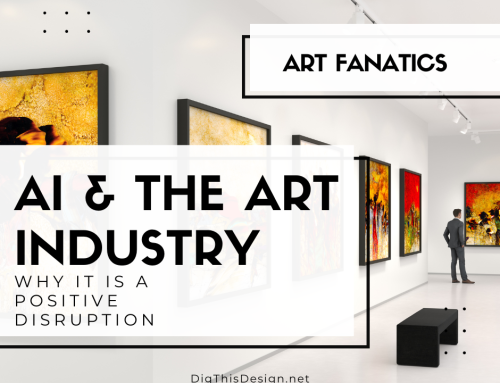Printmaking is an ancient yet ever-evolving art form that has captured the imagination of artists, collectors, and art lovers for centuries. From the earliest woodblock prints of the East to modern-day digital prints, the process and medium have adapted to technological advancements, yet the essence of printmaking remains a deeply significant method of artistic expression. Whether created as limited editions or as mass-produced posters, prints serve as both cultural artifacts and highly sought-after works of art.
The History and Facts of Printmaking
The Origins of Printmaking
Printmaking, in its earliest form, began with woodcut printing in China around the 9th century. This technique involved carving images into blocks of wood, which were then inked and pressed onto paper or fabric. This allowed artists to produce multiple copies of the same image, an important innovation that revolutionized art production. The ability to replicate images paved the way for the distribution of religious texts, artistic works, and scientific discoveries, making printmaking a powerful tool in spreading knowledge.
By the 15th century, the art of printing was further refined in Europe, most notably with the invention of the printing press by Johannes Gutenberg. This pivotal moment in history made books more accessible and led to the mass production of texts, while also enabling printmakers to produce detailed images and illustrations, which played an important role in the Renaissance. Artists like Albrecht Dürer and Rembrandt van Rijn would go on to perfect various printmaking techniques such as engraving, etching, and drypoint, using them to produce intricate and captivating works of art.
Traditional Techniques in Printmaking
Traditional printmaking methods are highly skilled, time-consuming processes that often require an intimate understanding of materials, tools, and methods. Some of the most prominent techniques include:
- Woodcut: One of the oldest forms of printmaking, woodcut involves carving an image into a wooden block. The raised areas are inked and pressed onto paper to create a print. This technique is known for its bold lines and dramatic contrasts.
- Engraving: In this method, artists carve lines into a metal plate, usually copper or steel, using tools like burins. After inking the plate, it is pressed onto paper, creating a fine, precise image. Engraving was popular during the Renaissance and is known for its detailed and delicate lines.
- Etching: This technique involves coating a metal plate with a layer of wax or acid-resistant ground. The artist then draws onto the plate with a needle, exposing the metal beneath. The plate is then immersed in an acid bath, which etches the exposed areas. After cleaning, the plate is inked and printed, resulting in intricate, flowing lines.
- Lithography: Developed in the late 18th century, lithography uses a flat stone or metal plate, on which an image is drawn with a greasy medium. The plate is then chemically treated so that the image retains ink while the rest of the surface repels it. Lithography allows for a wide range of tonal effects and was widely used by artists like Henri Toulouse-Lautrec and Marc Chagall.
- Screen Printing: In the 20th century, screen printing (also known as silkscreen printing) emerged as a popular method. The process involves pushing ink through a fine mesh screen onto a surface, creating bold, graphic designs. This technique gained fame through the work of artists like Andy Warhol, who used it to produce iconic prints of celebrities and everyday objects.
The Role of Prints in Culture and Society
Prints have played a significant role in shaping culture and society throughout history. As a reproducible medium, prints allowed for the dissemination of images and ideas far beyond the confines of traditional galleries and elite patronage. They democratized art, making it more accessible to a broader audience. Artists could create multiple copies of their works, reaching a much wider range of people than they could through one-of-a-kind paintings or sculptures.
During the Renaissance, for example, prints helped spread the visual culture of the period across Europe. Religious images, scientific diagrams, and portraits of royalty and scholars were reproduced in large numbers, contributing to the cultural exchange between regions. In the 20th century, printmaking became a medium for political expression, with artists using it to address issues such as war, social justice, and identity. The graphic power of prints made them an effective tool for communicating strong messages, as seen in the works of artists like Picasso, Goya, and the Mexican muralists.
The Appeal of Limited Editions and Collectibility
One of the most fascinating aspects of prints is their status as both original works of art and objects of mass production. The concept of limited editions, where only a set number of prints are produced, adds an element of exclusivity and collectibility to prints. Artists often sign and number their prints to indicate the edition size, making each print a unique and valuable piece in its own right.
Collecting prints offers art lovers the opportunity to own works by renowned artists at a fraction of the cost of a painting or sculpture. Additionally, prints allow for a deeper exploration of an artist’s creative process. For example, print series often include variations in color, technique, and composition, providing insight into the artist’s experimentation and development. Collectors can appreciate the differences between a first state (initial print) and subsequent states of an image, which may reflect changes made by the artist over time.
Digital Prints: The New Frontier
In the 21st century, digital technology has opened up exciting new possibilities for printmaking. Artists now use digital tools to create and manipulate images before printing them onto various surfaces. Digital printing offers unprecedented control over color, texture, and composition, allowing artists to explore new forms of expression while maintaining the essence of printmaking. The ability to produce high-quality reproductions of artwork with advanced printing techniques, such as giclée (a fine art digital printing process), has further revolutionized the print market.
Unlike traditional printmaking, where an artist must rely on physical materials and a mechanical process, digital prints can be created entirely on a computer, allowing for greater freedom and flexibility. This has led to a blending of traditional and contemporary techniques, with many artists incorporating digital elements into their print works, creating a hybrid form of art.
Conclusion
Printmaking remains one of the most significant and enduring forms of artistic expression. From its humble beginnings as a tool for mass communication to its current role in contemporary art, printmaking has continually adapted to the technological and cultural shifts of the times. Whether traditional or digital, prints continue to captivate audiences with their unique combination of craftsmanship, creativity, and accessibility. As both a medium for artistic experimentation and a valuable cultural artifact, prints will undoubtedly continue to play a crucial role in the art world for generations to come.





